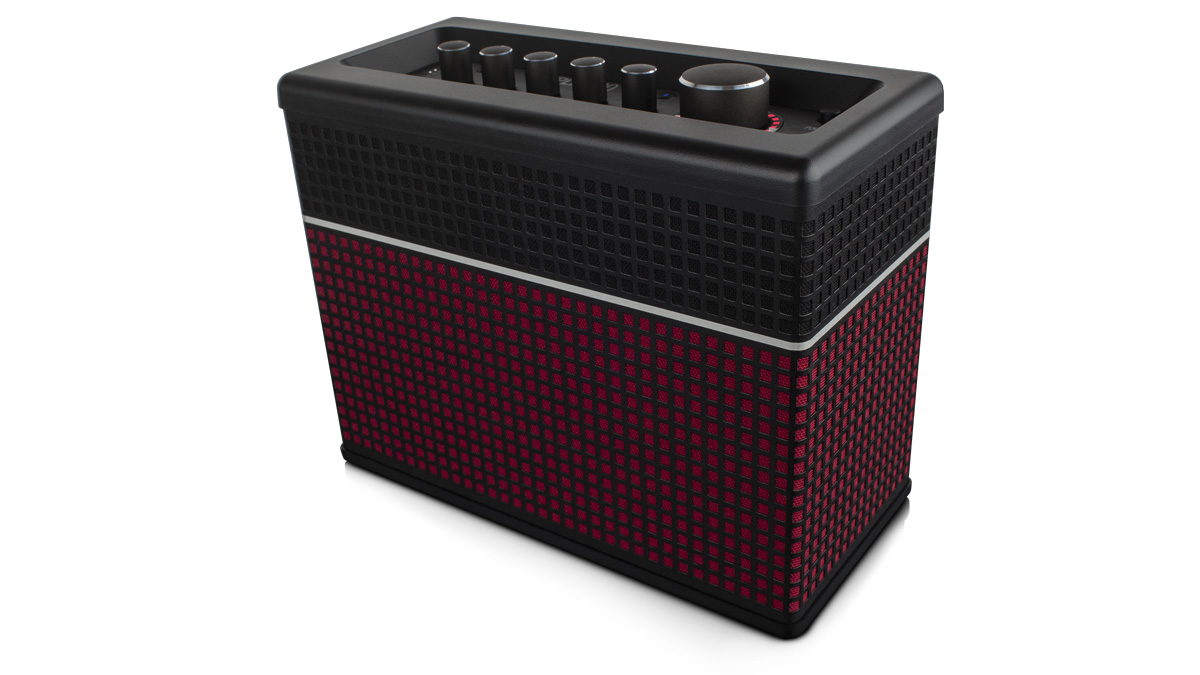MusicRadar Verdict
Line 6 has done a superb job with the AMPLIFi - a fantastic amp.
Pros
- +
Neat wireless editing options.
Cons
- -
Very few.
MusicRadar's got your back
To say that the market for modelling practice amps is saturated would be an awful pun, but it'd also be pretty accurate.
Step inside your local music shop, and you'll be hard pushed not to bump into an amp rammed with approximations of classic gear. It's no longer a novelty, rather what we've come to expect in 2016, so where next?
Well, at a time where we're seeing manufacturers of every device in your home - from TVs to washing machines - are obsessed with making everything connect to everything else ('The Internet Of Things'), Line 6 appears to be shouldering the burden of what we're gonna call The Internet Of Strings with its AMPLIFi range.
Part modelling amp, part recording interface, part Bluetooth speaker, the AMPLIFi has been around for a couple of years, but in a strange backwards release schedule, the self-contained 30-watt practice amp - arguably the most obvious use for all of this tech - has only just surfaced.
The concept is simple: for time-poor players, mo' features can mean mo' problems. The goal here is getting it working quickly and doing what you intended: have fun playing the damn guitar.
The AMPLIFi does this by rolling multiple functions into one box, taking most of the control away from the amp, and loaning your smartphone or tablet's touchscreen instead.
We were worried that having to be hooked up with our phone would be a pain, but in reality, being free of wires and being able to see everything we were doing makes it far more fun.
Instead of horrible button presses and scrolling text on a tiny screen, you wirelessly edit individual controls for your amps and pedals, browse presets, tune your guitar and more from the AMPLIFi Remote app's clean layout. One of the biggest features, though, is the music playback part of the app.
It's like a wireless aux input, and will play any music that lives natively in your device's music library. While you're there, you can blend the volume of your guitar vs the song you want to jam with, slow the track down and loop sections. This combines with the AMPLIFi's Tone Matching function, which gives you access to a pool of thousands of cloud-based song tones.
Once your song is selected for playback, it automatically searches the hive mind of the AMPLIFi online community, and suggests suitable presets. Downloading a patch takes seconds, and then you can try it, tweak it, save it and (if you like) re-upload it for others to use.
We were sceptical about the AMPLIFi 30 - it could have just been a rehashed version of 20-year old technology, but it sounds fantastic.
The models aren't just the same classics you find on every amp (although they're all in there too), and the effects are quality.
We were worried that having to be hooked up with our phone would be a pain, but in reality, being free of wires and being able to see everything we were doing makes it far more fun.
There's barely any need to touch the amp. If Line 6's objective was to allow players to make more of their guitar time, it's succeeded. So much so, that we barely had time to file this review!

I'm a freelance member of the MusicRadar team, specialising in drum news, interviews and reviews. I formerly edited Rhythm and Total Guitar here in the UK and have been playing drums for more than 25 years (my arms are very tired). When I'm not working on the site, I can be found on my electronic kit at home, or gigging and depping in function bands and the odd original project.
With its latest free update, Ableton has finally turned Note into the app I always wanted it to be
Technically capable, but struggle to make your tunes sound musical? 5 simple music theory hacks to make your tracks stand out
"Despite its size, it delivers impressive audio quality and premium functions as well as featuring a good selection of inspired sounds": Roland GO:Piano 88PX review










